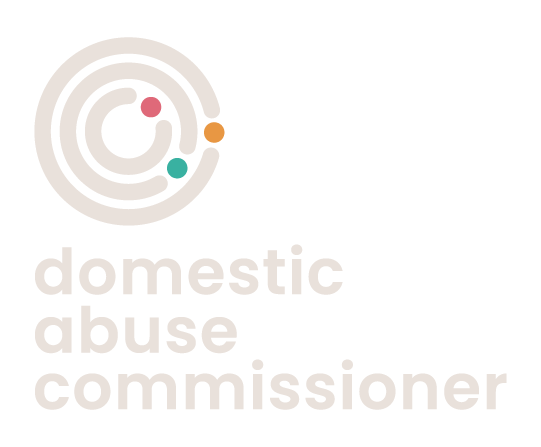Following the passage of the Online Safety Act 2023, a member of the Domestic Abuse Commissioner’s policy team outlines what has changed and what more must be done to protect victims online.
Everyone has the right to online safety and privacy. However, in an underregulated and ever-changing online landscape, there is a huge prevalence of online violence against women and girls (VAWG). With the introduction of the Online Safety Act, we have seen significant strides to protect victims online. But there is much more to do.
Online VAWG takes many forms including online harassment, online threats, online stalking, tech abuse and image-based abuse.
As new technologies continue to emerge and transform, so does the prevalence of online VAWG. The number of survivors of online VAWG supported by Refuge’s tech team rose by approximately 258% between 2018 and 2022.
This abuse can have serious psychological, emotional, financial, and physical impacts on victims and survivors. Ninety-two per cent of victims of online abuse have said that this online harm impacted their mental health.1
The gendered nature of this form of abuse is stark. Women are 27 times more likely to be harassed online than men, with 1 in 3 women having experienced online abuse perpetrated on social media or other online platforms at some point in their lives. Of these women, 1 in 6 (16%) experienced this abuse from a partner or ex-partner.
The Online Safety Act passed this summer and aims to make the online world safer. The Domestic Abuse Commissioner welcomed that stalking and harassment were priority offences in the Bill and was delighted that Controlling and Coercive Behaviour (CCB) was also announced as a priority offence, identifying it as a crime which, through volume of offences, has a significant impact on the community and therefore the ability of the police to tackle it.
This will force companies to take responsibility to tackle online domestic abuse perpetrated on their platforms or facilitated by their technology. This will make a significant difference to victims and survivors of domestic abuse, given that research by Refuge has found that 59% of survivors have experienced coercive control through social media.
But the government must go further. The new requirement for Ofcom to publish guidance on what actions services can take to reduce the risk of harm to women and girls2 is an important opportunity.
In 2022, coalition of VAWG sector experts created a ready-to-use set of guidelines, or ‘Code of Practice’ to tackle violence against women and girls online. The government and Ofcom have opted for statutory guidance over a VAWG Code of Practice. There is however, much that can and should be drawn from the coalition’s Code of Practice. I intend to work closely with Ofcom to ensure this statutory guidance is as ambitious as possible and look forward to consulting ahead of drafting alongside the Children’s Commissioner and the Victim’s Commissioner as a statutory consultee.
Whilst there are significant steps forward, the government must hold online platforms accountable in protecting victims. When it comes to misogynistic content, the way that the Act currently stands puts the onus on survivors to protect themselves from legal but harmful content. The safety of domestic abuse and VAWG victims and survivors must be prioritised over logistical inconveniences for firms. It is vital that platforms face accountability for their decisions. We cannot allow platforms to amplify and profit from the harmful social norms, attitudes and behaviours that underpin, normalise, incite, and give rise to such VAWG offences.
The Domestic Abuse Commissioner responded to Ofcom’s previous call for evidence3, highlighting the significant gaps in provision of services across England and Wales that can meet the specific needs of survivors. The Commissioner encouraged Ofcom to take the draft VAWG Code of Practice into consideration and raised concerns about the potential removal of the block button from ‘X’; a tool that currently helps survivors protect themselves from abuse.
Any new law is only as effective as its implementation. Online abuse is complex and everchanging – police forces must be equipped to recognise and respond to online VAWG. That means high quality training and greater capacity built into police forces to deal with the extent and volume of online and digital domestic abuse. Training must also ensure that a thorough risk assessment should be undertaken to identify wider patterns of abusive behaviour and ensure it is not treated as a one-off incident. I look forward to seeing the progression of a new training package being developed at the National Policy Chief’s Council and the College of Policing.
Crucially, the response to online VAWG must not be solely reactive. Prevention has an important role to play. Children and young people are currently able to access harmful content online and reports of increases of peer-on-peer abuse online are prolific. We must see a strengthened RSHE curriculum which tackles misogyny. There are currently excellent initiatives led by the members of the sector as well as the PSHE Association and the UK Council for Child and Internet Safety focussed on early detection and early intervention against online VAWG.
Social media and other online platforms should be safe and free for everyone to use. That includes women and girls who should be protected in both the online and offline worlds. We must build on the landmark Online Safety Act to make this vision a reality.
References
1 The Impact of Online Abuse: Hearing the Victims’ Voice (2022): Hearing-the-Victims-Voice.pdf; Cyber Safety at Work (2020): Download.ashx (suzylamplugh.org)
2 How the Online Safety Act will help to protect women and girls – Ofcom

